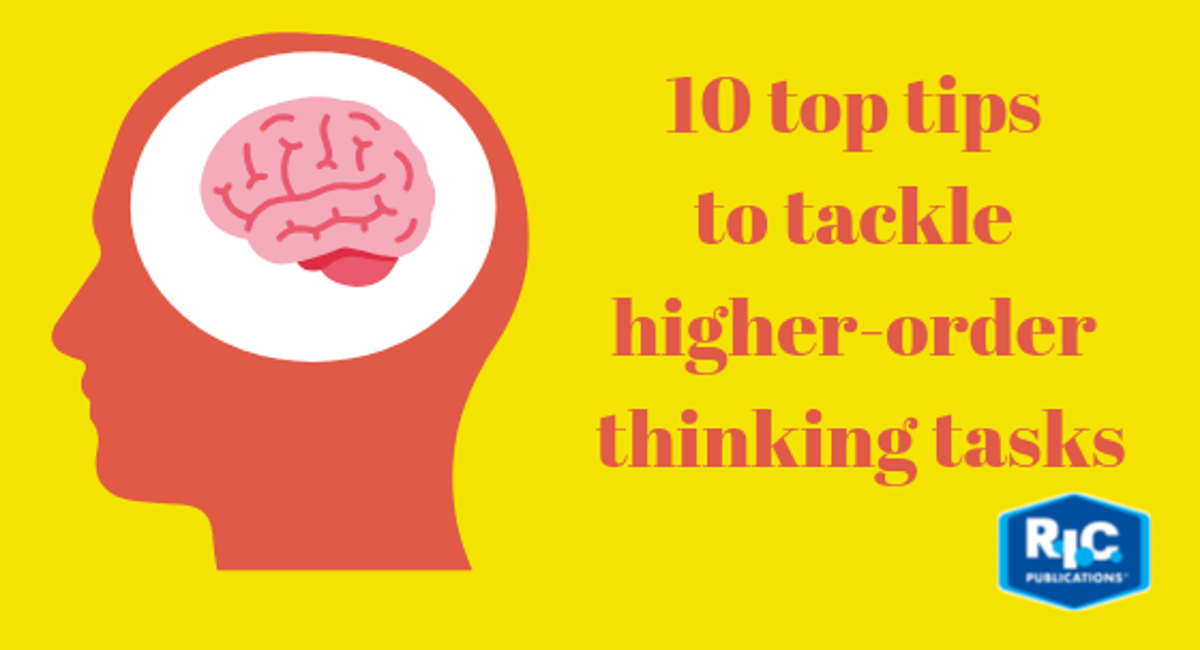- Monday 22 July 2019
- 0 Comments
Young children naturally use thinking skills. They learn autonomy through exploration, observe their environment using logic and reasoning, try new things and think creatively.
As children grow and enter an academic setting, they generally get ample practice with recall, recognition, identification and comprehension; however, other skills which are more challenging to incorporate can be neglected.
People with strong critical thinking skills—including analysing, predicting, modelling, composing, organising, evaluating options, designing, critiquing and problem-solving—can accomplish a great deal, whether or not they have background knowledge in a topic.
Higher-order activities are not supposed to be things your students have already learned how to do in the classroom. These activities let the students exercise their brains in a new way, therefore helping them to develop these other important skills.
But how do you support your higher-order thinking tasks?
We have put together this handy PDF, free for you to download today, of our ‘Top 10 tips for tackling tough higher-order thinking tasks’. Before beginning any higher-order thinking tasks, read the tips below, then share the tip that best supports the activity.
1. Unpack the task
Read the activity once to see what it's about. Then re-read it carefully. Ask yourself: What am I being asked to do? Solve a problem? Complete a puzzle? Write a story? Explain my thinking? Describe something? Then look at the information given.
2. Put yourself in the situation
Spend a few minutes imagining that you are in the situation described. How does it feel? Why is it important? Is this situation like one you have been in before?
3. Look for details
If an activity has a picture or a map, look at it closely. Look at everything, figure out what people are doing, and read any words. Think about which details might be the most important for what you have to do.
4. Think about what you already know
You already know a lot! If you're not sure how to begin, think about a topic or the objects you see on the page. Think about when you've seen or used something. Think about when you learned or talked about something.
5. Think about what the activity is like
Sometimes when you learn to do one thing, you can do the same thing in a similar situation. Ask yourself: Have I done something like this before?
6. Share ideas
If you can work with a partner or a group, talk about your ideas or where you are getting stuck. Sometimes different people have different parts of the answer. When you tell what you know, you can all succeed.
7. Use trial and error
If you can't get started, write down anything. Then compare it to what the activity asks for. Does it make sense or follow the activity's instructions? If not, why not? Then start to change your answer, little by little, so it does follow the instructions.
8. Work backward
Sometimes it makes sense to start at the end. Figure out where you want to end up. Then think about what your problem looks like just before that. What needs to happen to get from there to the end?
9. Check your answers as you go
After you write or draw your answer, re-read the question you are answering or the instructions you are following. Does your response answer the question? Does it make sense? Does it follow the rules given? Does it solve the problem? If not, figure out what part could be better and fix it.
10. Keep trying
Sometimes it takes a while for a new idea to come. Don't give up if you can't do an activity right away. When you figure it out, you'll feel great!
Download the below image display in your classroom. Click on the image to open it as a PDF.
Have you seen our recently released title Higher-order thinking skills?
Click here to see more and download a free sample unit to try.

